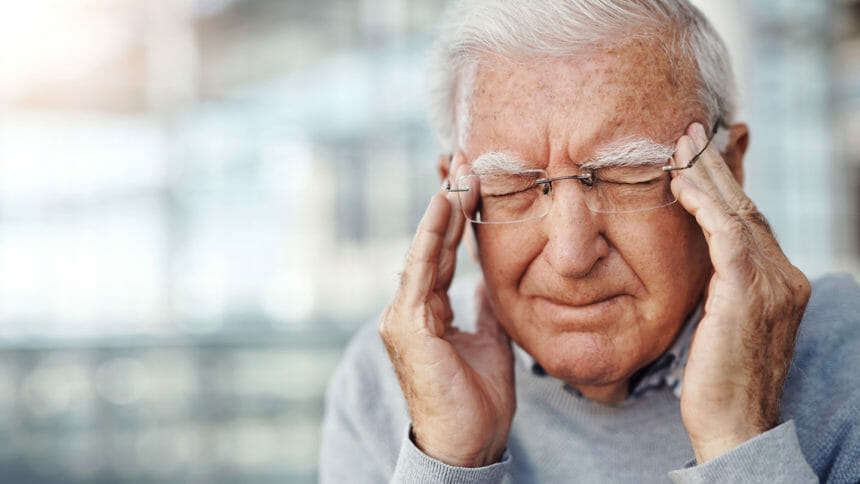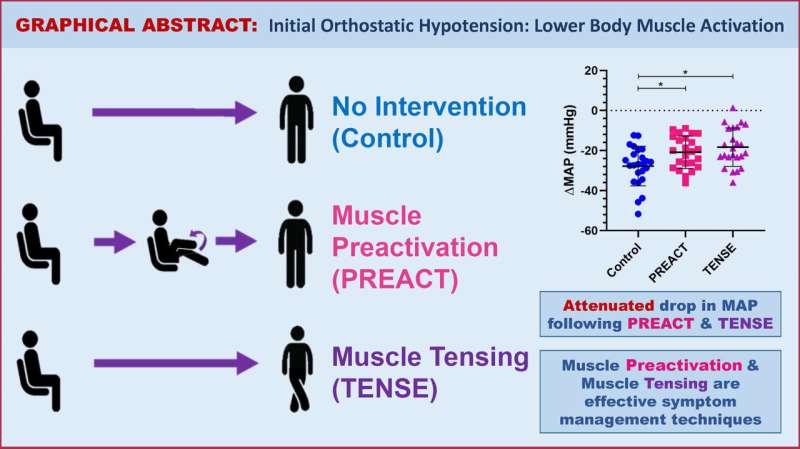

A few simple muscle-tensing maneuvers can reduce a common and sometimes dangerous sense of dizziness that occurs upon standing, a new study from Canada has found.
Regularly feeling dizzy or faint within seconds after standing up can be caused by a sudden drop in blood pressure and is called initial orthostatic hypotension, or IOH. Common in the general population, IOH affects 35% of geriatric outpatients and is associated with an elevated risk of falls, frailty and fainting in older adults. But there are few symptom management treatments available, and no medications exist that directly address the condition, the authors said.
With the goal of improving the quality of life for patients who have regular episodes of IOH, the investigators tested a set of muscle maneuvers in a group of participants in their 20s. Participants completed three sit-to-stand exercises that included:
- Repeated knee raises prior to standing, or PREACT;
- Lower body muscle tensing (thighs and buttocks) through leg crossing and tensing immediately after standing, or TENSE; and
- A stand with no intervention, which served as a control.
Both the PREACT and REACT maneuvers effectively improved blood pressure drop, leading to a reduction of symptoms on standing, reported lead investigator Satish R. Raj, M.D., of the University of Calgary. The maneuvers likely accomplished those effects by increasing cardiac output and stroke volume — measures of heart function, he and his colleagues theorized.
“Our study provides a novel and cost-free symptom management technique that patients with IOH can use to manage their symptoms,” said first author Nasia A. Sheikh, MSc, also of the University of Calgary. “Since it is a physical maneuver, it simply requires the lower body limbs, which patients can utilize at any time and from anywhere to combat their symptoms.”
A diagnosis of IOH can empower patients to “master their symptoms and thus minimize the disruptions to daily living caused by this common, but not commonly understood, condition,” added co-author Mary Runté, Ph.D., of the University of Lethbridge.
Full findings were published in the journal Heart Rhythm.



